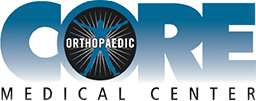ASTYM
“Jump start” your healing process with ASTYM treatment
Astym is a manual technique, using instruments, that stimulates regeneration of healthy soft tissues and assists to resorb and realign scar tissue, which will decrease pain and movement restrictions. Astym treatment was scientifically developed and it’s effectiveness has been proven by extensive research. Astym is one of the most effective treatments for tendonopathies, scar tissue problems and other soft tissue (muscle, tendon, etc) problems. CORE has 4 certified ASTYM providers available to treat you at either the Encinitas or location. For more information, see www.astym.com.
Aquatic Rehab
What is Aquatic Therapy?
Aquatic therapy is performed in both shallow and deep water and is a highly beneficial form of therapy for the treatment of a variety of injuries. Aquatic therapy offers an alternative form of rehabilitation and can be used in conjunction with regular clinic visits.
A benefit of aquatic therapy is that the buoyancy of water provides assistance in supporting the weight of the patient. The buoyancy of water also facilitates mobility and assists patients with exercise.
Aquatic therapy exercises use the water’s resistance to help increase muscle strength without placing the joints under additional stress. Aquatic weights and other equipment can assist with resistance exercises for increasing strength.
Aquatic therapy helps decrease the impact of full weight bearing, which reduces the amount of stress placed on the joints. This decreases pain and the patient is better able to perform their exercises.
If you are interested or have any questions regarding CORE’S aquatic therapy program, please consult your therapist.
Active Isolated Stretching (AIS)
Active Isolated Stretching (AIS) is a technique of stretching and strengthening developed by Aaron L. Mattes- Kinesiologist
It uses the neurophysiology of the body to better enhance the benefits of the stretching/strengthening program. It has been used by professional athletes and others to maximize their potential and decrease their risk of injury.
Therapeutic Taping Techniques
Kinesiotape, KT Tape, or Rocktape is a therapeutic modality that may be used to facilitate weak or inhibited muscles to promote joint stabilization (therefore, pain reduction) or may also be applied to inhibit or unload painful or inflamed tissue to help improve tolerance during therapeutic exercise, general exercise, or during normal daily activities.
Dynamic tape can help assist or resist motion, facilitate muscle by providing a stimulus to shorten, or inhibit trigger points or spasm. All PT’s at core utilize therapeutic taping for optimal patient results.
TMJ/TMD
TMJ dysfunctions involve the temporomandibular joint (TMJ) and surrounding musculature that enable one to chew, yawn, or talk. There are several causes that can trigger the disorder such as injury to the jaw or muscles of the head/neck (whiplash), stress causing fascial tightening, grinding or clenching of the teeth, dislocation of the disc within the joint, or osteoarthritis/rheumatoid arthritis involving the TMJ. Symptoms can be mild or extreme pain/discomfort in the jaw area, face, ear, or neck and upper shoulder when chewing, talking, or yawning. It can be temporary such as right after a dental procedure or can last for years. Some experience limited mobility in opening the mouth or a “lock jaw” that gets stuck in either an open- or closed-mouth position. Although noises in the jaw are not indicative of a TMJ dysfunction, clicking, popping, or grating sounds often are a complaint with one or both sides of the TMJ. Other common symptoms are difficulty chewing or pain with initiating a bite, toothaches, neck or headaches, ringing in the ears (tinnitus), or earaches. An MD or dentist will conduct a proper exam to determine if one has TMJ dysfunction, also called TMD. CORE has experienced specialists in the area of TMD to restore oral function and address secondary complications that often accompany this disorder.
TPI/Golf
TPI certification indicates that the professional has reached a level of golf fitness expertise that is unsurpassed in the industry. TPI leads the world in research and data on golf fitness, health and swing biomechanics.
Orthotics
Starting from the ground up
Poor alignment of the feet and legs can cause wear and tear to other parts of the body, often disrupting normal knee function and hip alignment as well as increasing forces on muscles of the lower back. The common signs and symptoms of poor feet alignment are:
- heel pain
- knee pain
- back pain
- tired/aching legs
- flat feet
- ball of foot pain (metatarsalgia or Morton’s neuroma)
- corns and callus bunions (hallux valgus)
- shin pain (shin splints)
- back of heel pain (achilles tendonitis)
- outside of the knee and hip pain (ilio-tibial band syndrome).
The answer is to treat the cause of these complaints, not just the symptoms. In other words, by restoring the lower limb’s natural angles, we align the feet and body posture to their neutral position and take away the cause of these problems.
Orthotic footwear are specifically designed to realign the feet to their natural position and to improve body posture, relieving many chronic complaints in the process. Therapists at CORE assess the need for different types of orthotics and can give appropriate recommendations to help your feet get rid of pain.
Yoga
Can yoga help you?
Incorporating yoga into physical therapy practice can be especially beneficial for multiple reasons, including improving flexibility, breathing techniques and mental training. Patients with a wide variety of injuries, including post-surgical patients would benefit from improved flexibility and utilizing common yoga poses is a great way to do so. Encouraging and emphasizing improved breathing techniques can also help with stress management and relaxation while participating in therapy sessions.






